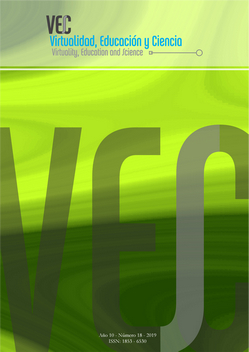Comparative study of technological and communication means to improve the articulation between the secondary and university levels
DOI:
https://doi.org/10.60020/1853-6530.v10.n18.23045Keywords:
Educational videos, QR Codes, Social Networks, competences for access to Higher Education, inter-level articulationAbstract
Previous studies developed by this research group showed that high school students have a partial use of computer technology and networks, and do not consider them as instruments for formal learning. Although they have changed the way that they study and learn. Didactic materials for students of the last year of the National School of Monserrat We have designed, developed and applied and a comparative study was carried out to elucidate which of the tools used could be more effective in learning. Videos, guides with expanded reality, use of virtual classroom and social networks was developed to strengthen the autonomy of learning, access competition that higher education demands. Qualitative and quantitative procedures were combined using surveys, interviews and focus groups. The results showed students checking materials on a regular basis taking advantage of the time in class, achieving greater autonomy with skills to search for new information and relate it to previous contents.Downloads
Download data is not yet available.
Downloads
Published
2019-01-07
How to Cite
Gómez, M., Saldis, N., Bielewicz, A., Colasanto, C., & Carreño, C. (2019). Comparative study of technological and communication means to improve the articulation between the secondary and university levels. Virtuality, Education and Science, 10(18), 100–116. https://doi.org/10.60020/1853-6530.v10.n18.23045
Issue
Section
Innovation and Experiences
License
The generation of derivative works is allowed as long as it is not done for commercial purposes. The original work may not be used for commercial purposes.


